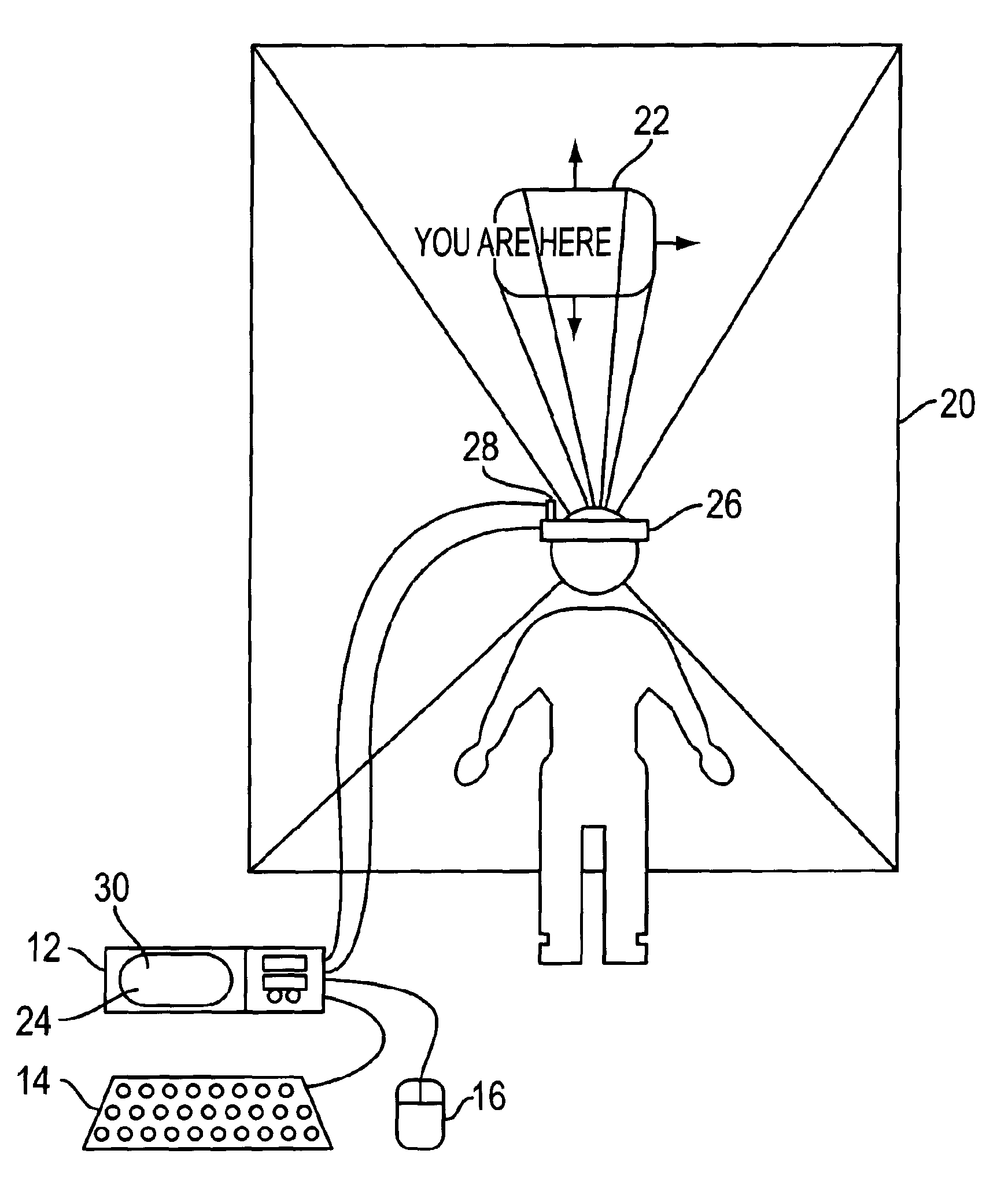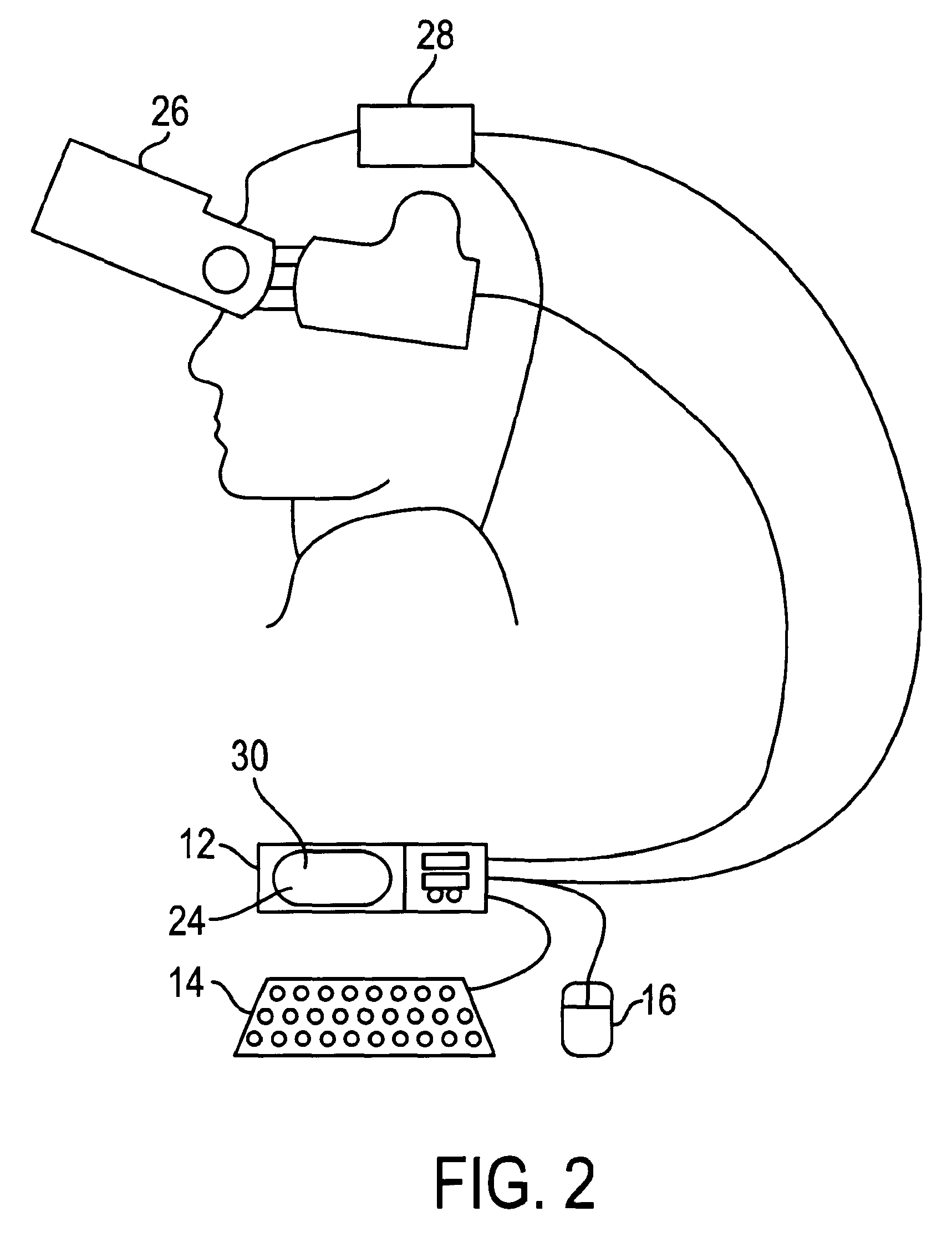Intuitive control of portable data displays
a portable data display and intuitive control technology, applied in the field of human/computer interfaces to visual data, can solve the problems of lag between commanding the computer, difficult to determine where on the page one's view is directed, and exacerbate spatial orientation problems, so as to improve the response to raw data, improve scrolling of imagery, and effective magnification operation
- Summary
- Abstract
- Description
- Claims
- Application Information
AI Technical Summary
Benefits of technology
Problems solved by technology
Method used
Image
Examples
first embodiment
[0075]The present invention has been implemented in two alternative prototype embodiments, with additional embodiments contemplated. The first embodiment is constructed using an Apple Macintosh Duo 230 portable computer 12, a General Reality CyberEye Model 100 head-mounted display 26, and InLARGE screen magnifier software by Berkeley Systems (Berkeley, Calif.). In this embodiment, the head-tracker 28 is an experimental device utilizing Gyrostar ENC-05E solid-state gyroscopes by Murata Manufacturing Company (Kyoto, Japan, and US location at Smyrna, Ga.). Two gyroscopes are used, one each for the head's pitch (elevation) and yaw (direction) degrees of freedom. The output of each gyroscope consists of a differential voltage, with the difference voltage directly proportional to the angular velocity of the sensor. These outputs are fed to the Macintosh computer 12 via the Apple Desktop Bus (ADB) Port, which is used on all Macintosh computers for accepting input from keyboards, mice, and ...
second embodiment
[0083]the invention has been implemented for the Intel / Microsoft personal computer architecture. In this embodiment, the computer 12 is a 90 Mhz Pentium host computer, the head-mounted display 26 is a CyberEye Model 100, and the head-tracker 28 is a 3-axis magnetometer, available as the Model TCM-2 from Precision Navigation, Inc. (Mountain View, Calif.) or the CyberTrack™ from General Reality Company (San Jose, Calif.). This embodiment has been made functional using LP-DOS from Optelec (Westford, Mass.) as the screen enlarger 24, although alternative commercially available screen enlargers may be used without modifying the remaining components of the system.
[0084]In this second embodiment, the selected head-tracker 28 is an absolute orientation sensor, although any alternative head-tracking device may be used. The specific 3-axis magnetometer used as the head-tracker 28 in this embodiment connects to the serial port of the computer 12, and provides an internal conversion from absolu...
PUM
 Login to View More
Login to View More Abstract
Description
Claims
Application Information
 Login to View More
Login to View More - R&D
- Intellectual Property
- Life Sciences
- Materials
- Tech Scout
- Unparalleled Data Quality
- Higher Quality Content
- 60% Fewer Hallucinations
Browse by: Latest US Patents, China's latest patents, Technical Efficacy Thesaurus, Application Domain, Technology Topic, Popular Technical Reports.
© 2025 PatSnap. All rights reserved.Legal|Privacy policy|Modern Slavery Act Transparency Statement|Sitemap|About US| Contact US: help@patsnap.com



